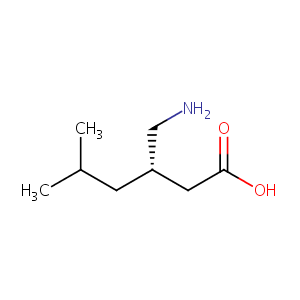| 1 |
ClinicalTrials.gov (NCT00638443) Lumbar Stenosis Outcomes Research (LUSTOR)
|
| 2 |
URL: http://www.guidetopharmacology.org Nucleic Acids Res. 2015 Oct 12. pii: gkv1037. The IUPHAR/BPS Guide to PHARMACOLOGY in 2016: towards curated quantitative interactions between 1300 protein targets and 6000 ligands. (Ligand id: 5484).
|
| 3 |
Pregabalin FDA Label
|
| 4 |
Diphenhydramine FDA Label
|
| 5 |
Drugs@FDA. U.S. Food and Drug Administration. U.S. Department of Health & Human Services. 2015
|
| 6 |
Pregabalin reduces the release of synaptic vesicles from cultured hippocampal neurons. Mol Pharmacol. 2006 Aug;70(2):467-76.
|
| 7 |
Transport of Pregabalin Via L-Type Amino Acid Transporter 1 (SLC7A5) in Human Brain Capillary Endothelial Cell Line. Pharm Res. 2018 Oct 29;35(12):246.
|
| 8 |
The Protein Data Bank. Nucleic Acids Res. 2000 Jan 1;28(1):235-42.
|
| 9 |
Intact cell binding for in vitro prediction of sedative and non-sedative histamine H1-receptor antagonists based on receptor internalization. J Pharmacol Sci. 2008 May;107(1):66-79.
|
| 10 |
Identification of human cytochrome p450 isozymes involved in diphenhydramine N-demethylation. Drug Metab Dispos. 2007 Jan;35(1):72-8.
|
| 11 |
Pharmacogenomics in psychiatry: implications for practice. Recent Pat Biotechnol. 2014;8(2):152-9.
|
| 12 |
Substrates, inducers, inhibitors and structure-activity relationships of human Cytochrome P450 2C9 and implications in drug development. Curr Med Chem. 2009;16(27):3480-675.
|
| 13 |
Cholinesterase inhibition by phenothiazine and nonphenothiazine antihistaminics: analysis of its postulated role in synergizing organophosphate toxicity. Toxicol Appl Pharmacol. 1975 Feb;31(2):179-90.
|
| 14 |
An in vitro coculture system of human peripheral blood mononuclear cells with hepatocellular carcinoma-derived cells for predicting drug-induced liver injury. Arch Toxicol. 2021 Jan;95(1):149-168. doi: 10.1007/s00204-020-02882-4. Epub 2020 Aug 20.
|
| 15 |
First-generation antihistamines diphenhydramine and chlorpheniramine reverse cytokine-afforded eosinophil survival by enhancing apoptosis. Allergy Asthma Proc. 2007 Jan-Feb;28(1):79-86. doi: 10.2500/aap.2007.28.2961.
|
|
|
|
|
|
|


